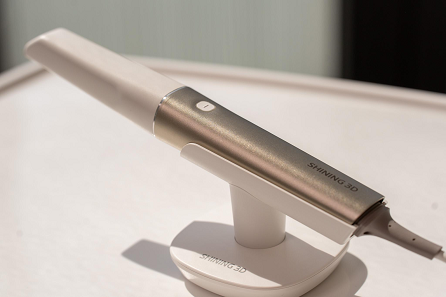In today’s digital dentistry landscape, precision and efficiency are essential for delivering consistent clinical outcomes. The photogrammetry intraoral scanner is a key development in achieving this level of performance, especially in implant dentistry. At SHINING 3D DENTAL, we have integrated photogrammetry with intraoral scanning in our Aoralscan Elite to support accurate implant positioning, improve soft tissue alignment, and simplify the transfer of scan data to CAD systems. This technology supports dental professionals by minimizing errors, saving time, and improving the predictability of implant procedures.

What Sets a Photogrammetry Intraoral Scanner Apart?
A photogrammetry intraoral scanner combines standard 3D imaging with high-precision photogrammetric measurements. This dual capability allows for capturing both surface textures and exact spatial relationships of implant components. In clinical practice, this means that implant positions can be recorded with a higher level of accuracy than traditional intraoral scanners alone.
The Aoralscan Elite from SHINING 3D DENTAL is engineered to handle this dual function. By integrating photogrammetry into the scanning process, we enable accurate capture of implant positions, even in cases where multiple implants are involved or when the reference points are limited. This supports digital workflows and allows dental labs to design and produce restorations that fit precisely without the need for multiple adjustments.
Improving Implant Positioning and Tissue Alignment
Implant positioning must be accurate to ensure long-term success. Even minor discrepancies in alignment can affect functionality and patient comfort. With the Aoralscan Elite, the integration of photogrammetry intraoral scanner capabilities helps ensure that the scan accurately reflects both the hard and soft tissue conditions. This is especially important in full-arch cases or edentulous patients, where traditional markers may be absent.
Accurate soft tissue alignment during the scanning phase also improves outcomes for final restorations. This added level of precision helps the dental team assess the relationship between the implant and surrounding tissue, reducing the risk of misalignment or discomfort after placement.
Efficient Data Transfer to CAD Systems
In digital implant dentistry, capturing accurate scan data is only the first step. Efficient transfer of this data to CAD systems is essential for the design and production of restorations. The Aoralscan Elite ensures that all captured data can be seamlessly imported into CAD workflows. This reduces the need for manual adjustments and rework, making the entire process more efficient.
By eliminating common data transfer issues, the photogrammetry intraoral scanner supports consistent output quality and shortens the time between scanning and delivery. This is especially beneficial for clinics and labs working on tight schedules or managing multiple cases at once.
Reducing Errors and Chair Time
Clinical efficiency is just as important as accuracy. The photogrammetry intraoral scanner reduces the risk of error in implant positioning by providing highly accurate 3D data, which eliminates the need for repeated scans or adjustments. This directly translates into reduced chair time for the patient and more streamlined workflows for the clinic.
The Aoralscan Elite supports quick scanning and precise results, allowing clinicians to move from scan to design without lengthy delays. For the patient, this means fewer appointments and shorter visits. For the clinic, it means higher throughput and more predictable outcomes.
Conclusion
The photogrammetry intraoral scanner, such as the Aoralscan Elite from SHINING 3D DENTAL, brings meaningful advantages to implant dentistry. By combining photogrammetry with intraoral scanning, this technology supports accurate implant positioning, improves tissue alignment, and ensures reliable data transfer to CAD systems. These improvements result in fewer clinical errors, reduced chair time, and more efficient digital workflows.
 ENG
ENG








